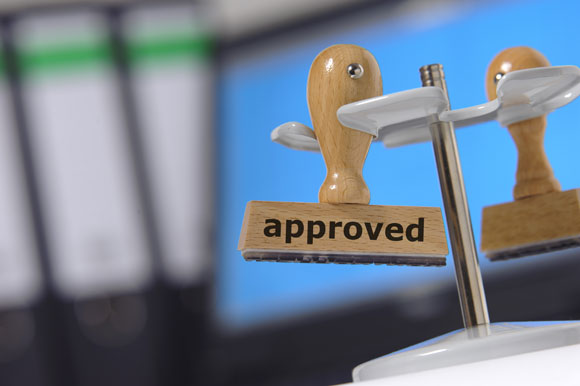Improving Links on Your Design Blog
0Those in the SEO world know that linking to other relevant websites (known as outgoing links) and receiving links from other blogs (known as backlinks) increase your page rankings.

Both outgoing links and backlinks show Google, Yahoo, and other search engines that you put your readers first, and that your goal for your design blog is to provide relevant, helpful information to readers, rather than just to fill the Internet with more SEO muck.
But for those of us who are not SEO experts, the rules of successful links can be a little confusing. Of course, most anyone who has a blog wants to be ranked first by search engines, which is one of the main reasons why we place outgoing links on our blogs. Problems can arise, however, if you do not check the links you place on your design blog.
To help out fellow bloggers in the design world, below are a few key tips for successfully adding outgoing links and backlinks to your posts. The following tips have been gathered from Google’s own rules for SEO, mixed in with a bit of hard-earned personal experience.
Always Remember: Quality vs. Quantity
Google specifically reminds everyone in their Webmaster Guidelines under “Quality guidelines – basic principles” not to
“participate in link schemes designed to increase your site’s ranking or PageRank. In particular, avoid links to web spammers or ‘bad neighborhoods’ on the web as your own ranking may be affected adversely by those links.”

Image by shutterstock
For designers, this means that you do not want to just start littering your posts with links to other sites. Of course, the theory is that the more links you have, the higher a ranking Google will give you. But in reality, it is better to only include a few links to design-related sites that have a high page ranking themselves and/or that are related to your post topics.
Avoid Link Exchange Programs at all Costs
Designers are a busy lot. Most designers who have a blog use it to help market their design business. So, in addition to completing projects, they also have the responsibility of writing relevant and helpful blogs that lead visitors to their site and, hopefully, turn them into clients. This is why the idea of a link exchange program can be so appealing, especially when these programs claim to increase your page rank almost overnight.
Good ole’ Google has made it quite clear, however, that link exchanging, whether done through a program or simply made as an agreement with another blogger, can adversely affect your page rank. According to Google’s Link schemes section, buying and selling links (i.e. link exchange programs) is a practice that you should avoid at all costs.
Google reminds us that before making a decision on an SEO practice, simply ask yourself if it benefits your readers. If your purpose is solely to increase page rank, then you are looking at the entire purpose of blogging the wrong way; blogging was invented to give us a way to share our knowledge with a community of designers.
Watch Out for Web Spammers
Web spammers are people who develop multiple pages (hundreds, thousands, or even more) that are bombarded with keywords and key phrases to make the web page feel like a legitimate site with relevant pages. However, looking at the site very closely and scrutinizing its architecture, you should be able to detect that it is really a site that contains redirect pages, gateway pages, doorway pages, and even malicious software.

Image by shutterstock
What most professional spammers do is put their own pages on a secondary domain (often disposable) and link it with other web pages. If you happen to link your site to one of these spam web pages, then you are actually risking your design site because when one of these sites gets banned, you will be too. Search engines will see you as a “neighbor” who lives in a “bad neighborhood,” and this can severely harm the reputation of your site. Fortunately, if a web spammer backlinks to your site, you will not be banned when they are.
The best practice for placing outgoing links on your blog or website is to personally check out each site for yourself. Make sure that the website you wish to link to has pages that
- are not loaded with keywords or phrases.
- actually contain relevant content.
- link to other relevant sites or to other relevant pages within their own site.
- “feel” right; if in doubt, do not link.
You may also want to protect your readers from spam backlinks on your blog by placing a “nofollow” value on a spam link.
Think Relevance
Okay, so now you know to avoid link exchange agreements (paid or not) and web spammers, but how exactly should you go about placing links on your design blog that will help your page rank? It’s rather simple, really. Every time you write a post, do a search on Google to see if there are any other design posts out there related to your topic. The key here is relevance. Ask yourself, will placing this link in this post help my readers or distract them from the topic? Will this link act as a golden nugget and enrich the reading experience of my visitors?
Keep in mind that the other reason why you want all of your links to be relevant is to keep your readers coming back for more and to gain backlinks. If you litter your blog with links that only annoy your visitors because the information is not helpful, they will stop clicking on the links and maybe even remove you from their bookmarks. On the other hand, if your content is rich and full of information, visitors will keep reading and top design blogs will place backlinks on your site.
Of course, this means that some posts will have no links at all. If you cannot find any relevant information on the web, do not fall into the trap of including a link just to include one. If there is nothing out there to further educate your readers, then maybe other design blogs will now link to your post because you are the first to broach this topic. Voila! Your page rank has just increased.
Remember the Key
Running a design blog takes a lot of hard work. However, if you remember that the key is to provide fresh and helpful content to the design community, you will be well on your way to meeting your goal of increasing page rank, gaining a large following, and maybe even building your client base.




